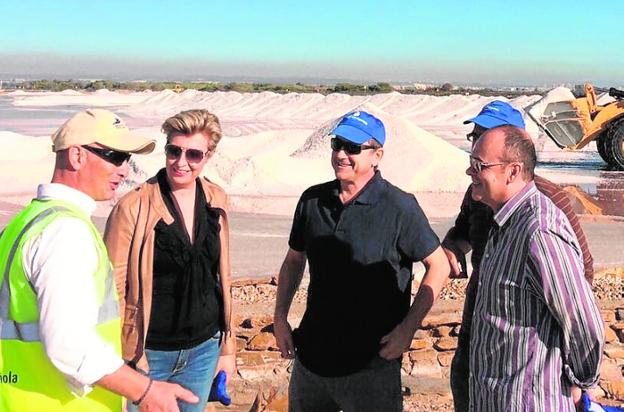Murcia’s Minister for the Environment, Consuelo Rosauro, visited the Salinas and Arenales of San Pedro on Friday, which this year is expected to produce about 100,000 tons of salt.
60% of the mineral will be sold in 25 kilogram bags to a multitude of different industries; 25% in packs of one or two kilos for commercial sale in stores and the rest in ‘big bags’ of a thousand kilos, although this format is being reduced in favour of the others.
Rosauro explained “how the saline activity has helped to configure the landscape and the ecological sites that are a paradise for birds and other species as part of the natural environment.”
She said that “the salinas of San Pedro del Pinatar is one of the most balanced examples of human intervention on the coast, a living example of ecosystems capable of sustaining a high diversity and, at the same time, maintaining the capacity to generate services of great economic importance “.
The essence of the salt process consists in the progressive evaporation of water from the Mar Menor, gradually increasing the concentration in seawater salts stored in shallow ponds until it reaches the condition that causes the precipitation of the sodium chloride. In the salt mines of San Pedro the water is pumped from the Mar Menor along two different routes, where it circulates through a series of channels joined together by a series of gates.
The final process sees the salt subjected to a washing process which eliminates possible impurities.





